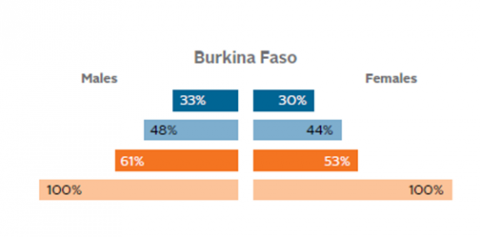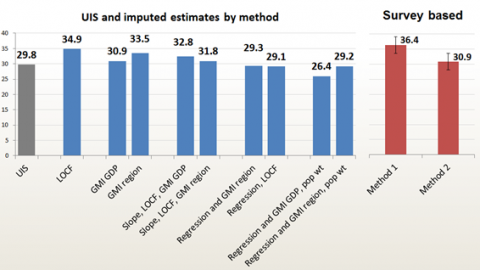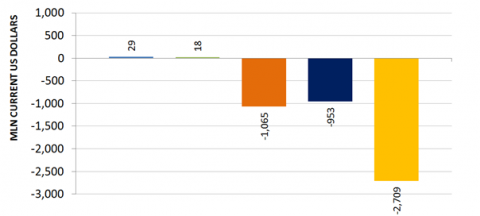You are here
EPDC presentations at CIES 2014 Toronto
EPDC presentations at CIES 2014 Toronto
EPDC and FHI 360 were well-represented at the 2014 Comparative and International Education Society (CIES) conference in Toronto. Under the theme “Revisioning Education for All”, the conference provided a forum for highlighting a broad range of academic and practitioner-focused global education work that had taken place over the previous year. Below are quick highlights of the sessions that EPDC was involved with.
Figure 1. Example of a learning pyramid

EPDC’s Ania Chaluda participated in a Tuesday session titled “Revisioning approaches to teaching reading: Emerging evidence from sub-Saharan Africa” along with other FHI 360 researchers. She highlighted the connection between access, retention and learning outcomes captured at a specified grade level through the Learning Pyramid, a visualization that was featured in a recent EPDC publication on this topic.
-
Click here to view the presentation slides
Figure 2. Estimates of primary-age out of school children in sub-Saharan Africa, 2011, based on range of imputation methods

EPDC research was also featured in a Friday morning panel “The limits of what we know: Missing data in education and development”. Charlie Gale started the panel off with a discussion of missing data and sources of discrepancy in one of the most important indicators used to measure progress in the MDG education goals- the global number of out of school children. Carina Omoeva’s presentation followed, which showcased a recent exercise in which EPDC researchers utilized several commonly used imputation strategies to determine a plausible range for the number of out of school children in sub-Saharan Africa for 2011. This is offered as an alternative to the UIS estimate of 29 million, and intended to emphasize that this estimate is not precise enough to be thought of as anything other than a range of values. Finally, Kurt Moses and Walter Phillips from FHI 360’s Global Learning Group provided a country-level view of political and other challenges in establishing EMIS data systems in low income and post-conflict environments, highlighting work in Liberia and Guatemala to make their points.
-
Click here to view presentation slides on out of school children data
-
Click here to view presentation slides on missing data and imputation
-
Click here for a link to a recently-released video on FHI 360’s Liberia Teacher Training Program II
Figure 3. Financing gap for Mozambique primary schooling, based on different cost projections

The final panel that EPDC was involved in was titled “The nickels and dimes of Education for All: Non-participation, wastage, and efficiency in expanding educational opportunity”. Results for Development presented first on the costs of non-participation in education. EPDC’s Ania Chaluda then handled the last two parts of the presentation, the first of which looked at how some indicators used to measure the efficiency of schooling systems tend to hide a large amount of repeating students at certain grades of the schooling cycle. Using this as a starting point, she showcased EPDC calculations under a range of ‘best’ or ‘worst’ case scenarios, to determine the cost of achieving education for all, as well as some extent of learning.
-
Click here to view presentation slides on wastage, inefficiency and costs of education for all
Please note that the presentations on cost calculations as well as missing data and imputation will be developed into research briefs in the coming weeks and months. Make sure to follow our blog and keep up with us on social media (Facebook and Twitter) for updates on the latest research from EPDC.

Add new comment